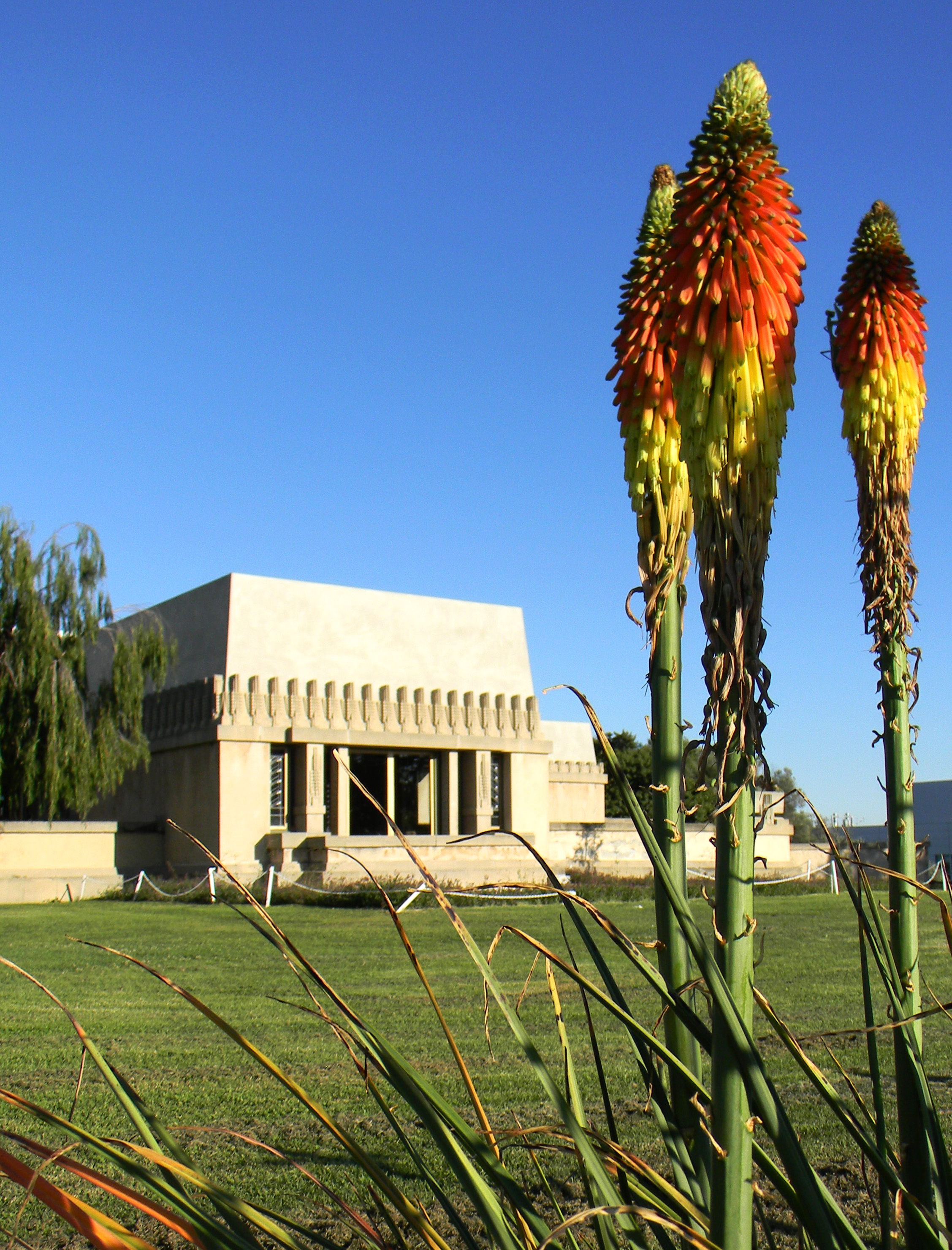Hollyhock House, an L.A. landmark, features impressive architecture, artistic designs and a trip back to the roaring “˜20s

Before you go:
Parking: Free
Outdoor Premises: Free
Hollyhock House General Admission: $7
Tours: Fri.-Sun. at 12:30, 1:30, 2:30 and 3:30 p.m.
SOURCE:
Compiled by Lauren Roberts
By Lauren Roberts
Oct. 12, 2011 12:57 a.m.


The funny thing about Google Maps is that it doesn’t always tell the truth.
I made this discovery en route to my latest Los Angeles venture this past weekend. Just past Edgemont Street and discretely veering off of Hollywood Boulevard is an unmarked road called (according to Google) “Lower/Upper Road” ““ perhaps someone stole that beauty of a road sign, or locals just like to keep their secrets well-kept.
Thankfully, Barnsdall Art Park has a decent sign, and I know some quality navigators. The park’s entrance curves around a well-shaded hill leading to a well-preserved snapshot of roaring “˜20s Los Angeles history ““ Hollyhock House.
Built atop Olive Hill from 1919-1921, the 90-year-old structure and historical landmark is American architectural genius Frank Lloyd Wright’s first Los Angeles building project and features prominent elements of the sleek, art deco style for which he’s famous.
Partially tucked between the drapery of trees, the former home of oil heiress Aline Barnsdall emerges like a concrete stucco temple overlooking an expansive vista of the Los Angeles Basin and the Hollywood Hills, complete with a front porch view of Griffith Observatory and the Hollywood sign.
According to docent and UCLA alumnus Bob Koppany, it was always Wright’s goal to “bring the outside in, and the inside out” in his designs, aesthetically meshing the home’s interior and exterior to create the sense of an organic singular space.
Though they are not currently in bloom on the premises, the home takes its name from Barnsdall’s favorite flower, the hollyhock. Wright incorporated knobby, abstracted representations of the plant in nearly every detail of the home ““ carved pillars, wall edges, planters and even interior furniture designs.
Intricate, angular-stained glass windows dominate many rooms in the house, making ample use of Southern California sunshine to illuminate geometric glass shapes sprinkled with green and lavender. Asymmetrical room designs further enhance qualities of light and shadow varying depending on the time of day.
The home’s now-vintage (and sometimes quirky) accommodations for a wealthy 1920s lifestyle include an outdoor theater space, letter-writing alcove and library, servants’ quarters, a cleverly concealed outdoor laundry line drying nook and hidden “water closet” toilets ““ a design closely resembling today’s public toilets and, according to Koppany, what Wright considered his greatest achievement.
It didn’t matter that I didn’t know much of anything about architecture ““ a mere glance at the home reveals Wright’s talent for making things easy on the eyes.
Though the home is among several other later Wright designs in Los Angeles, Hollyhock House is the only residence open to the public. I’ve got no doubt that it also has the best view, though Barnsdall only lived in the home for two years before giving it to the city of Los Angeles for use as an arts center in memory of her father.
Because terra cotta and concrete building materials aren’t exactly resistant to earthquakes, certain regions of the home are condemned, keeping it in constant restoration. However, indoor tours still show much of the home’s interior which closely resembles how it might have appeared during its “˜20s heyday with Nile green and copper decor and some original furniture.
Free parking and open grass ““ two Los Angeles rarities ““ are plentiful at Hollyhock House. And I was pleasantly surprised to find visitors lounging at benches, studying at tables and even playing frisbee on the front lawn during my Saturday visit.
I only wish I’d been around in 1927 so that I could have convinced Barnsdall to gift her home to me when she tired of it.
Are you a fellow history junkie looking to explore Los Angeles? Email Roberts at
[email protected]. “Artscapes” runs every Wednesday.


